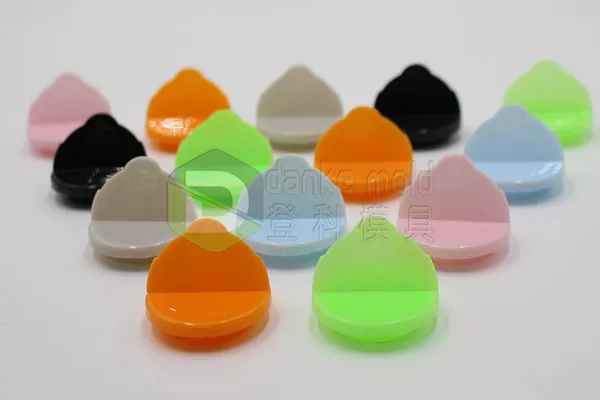Your injection mold is a powerhouse of productivity, a precision tool engineered to churn out thousands, even millions, of flawless parts. This vital asset represents a significant investment for your business, but its value extends beyond its initial cost. Proper care and maintenance of your injection mold is not just an option—it’s a necessity.
Neglecting mold maintenance can have dire consequences, leading to reduced part quality, increased downtime due to malfunctions, costly repairs, or even premature mold replacement. To safeguard your investment and ensure your mold operates at peak performance for years to come, it’s essential to adopt a proactive maintenance approach.
This blog post will discuss the best injection mold care and maintenance practices. We’ll provide actionable tips on cleaning, lubricating, and storing your mold to maximize its lifespan, minimize downtime, and consistently produce high-quality parts.
Cleaning Your Injection Mold
Keeping your injection mold clean is paramount for maintaining optimal performance and producing high-quality parts. Resin residue, debris, and even rust can accumulate over time, affecting the mold’s functionality and the appearance of your finished products. These unwanted substances can cause imperfections in the parts, such as flash, warping, or discoloration, leading to increased rejects and wasted material.
To prevent these issues, cleaning your injection mold should be a regular maintenance routine. Ideally, cleaning should occur after each production cycle. However, more frequent cleaning may be necessary if you’re working with materials prone to leaving heavy residues or operating in harsh environments.
There are several effective cleaning methods available, each with its advantages:
- Manual cleaning: This traditional approach involves using soft brushes, cloths, and approved solvents to remove debris and residue. It’s suitable for general cleaning and easily accessible areas.
- Ultrasonic cleaning: This method utilizes high-frequency sound waves to create microscopic bubbles that dislodge contaminants from even the most intricate mold cavities and channels. It’s ideal for thorough cleaning of complex molds.
- Dry ice blasting: This eco-friendly technique uses solid carbon dioxide pellets to remove residues without damaging the mold surface. It’s particularly effective for cleaning delicate or sensitive molds.
When cleaning your injection mold, prioritize safety by wearing appropriate protective gear, such as gloves and safety glasses, and ensuring adequate ventilation when using solvents. By adhering to a regular cleaning schedule and employing the right methods, you can keep your injection mold pristine, ensuring consistent production of flawless parts.
Lubricating Your Injection Mold
Lubrication is a critical aspect of injection mold maintenance. Proper lubrication reduces friction and wear between moving parts, ensuring smooth operation, preventing galling or seizing, and ultimately extending the lifespan of your mold.
Different areas of the mold require different types of lubricants:
- Mold release agents: These are essential for facilitating the easy ejection of molded parts and preventing them from sticking to the mold surfaces.
- Greases and oils: These lubricants are designed for sliding surfaces and moving components, ensuring smooth operation and reducing wear.
- Anti-corrosion agents: These protect mold surfaces from rust and corrosion, which is especially important for molds stored for extended periods or used in humid environments.
The frequency of lubrication varies depending on the mold’s design, the materials used, and the specific operating conditions. It’s crucial to follow the manufacturer’s recommendations for lubrication frequency and type.
When applying lubricants, less is often more. Use them sparingly to avoid contamination of the molded parts, which could lead to defects or performance issues. A thin, even coating is usually sufficient to provide adequate lubrication.

Plastic parts
Storing Your Injection Mold
Proper storage is crucial for preserving your injection mold’s condition when not in use. The ideal storage environment is clean, dry, and climate-controlled. Excess moisture can lead to rust and corrosion, especially on metal components, while extreme temperature fluctuations can cause warping or damage to delicate mold parts.
To ensure your mold remains in optimal condition:
- Clean and dry: Thoroughly clean and dry the mold before storing it. Any residual moisture or debris can accelerate deterioration.
- Controlled environment: Store the mold in a climate-controlled area with consistent temperature and humidity. This helps prevent condensation and minimizes the risk of thermal expansion or contraction.
- Upright position: Store the mold upright whenever possible to minimize stress on its components and prevent deformation.
- Protective measures: Apply rust-preventative coatings to metal surfaces, especially if your storage environment isn’t perfectly controlled. Cover the mold with a protective sheet or bag to shield it from dust and debris. Finally, designate a specific storage area with limited access to prevent accidental damage.
Additional Maintenance Tips
Beyond the essentials of cleaning, lubrication, and storage, a few additional maintenance tips can further extend the life and performance of your injection mold:
- Regular inspections: Schedule routine inspections to identify signs of wear, damage, or potential issues before they escalate.
- Prompt repairs: If you notice any damage or abnormal wear, address it promptly. Small issues can quickly worsen if left unattended, leading to costly repairs or mold replacement.
- Professional maintenance: Consider engaging a qualified technician for periodic maintenance. They can perform in-depth inspections, identify hidden problems, and conduct specialized cleaning or repairs.
Documenting maintenance activities: Keep detailed records of all cleaning, lubrication, and repair activities. This documentation can help you track the mold’s condition, identify wear patterns, and plan future maintenance proactively.
In Conclusion
By meticulously caring for your injection mold, you’re not just preserving a piece of equipment; you’re protecting a valuable asset that drives your business’s success. Consistent cleaning, proper lubrication, and careful storage are essential to ensure your mold’s longevity and optimal performance. Remember, a well-maintained injection mold is a key ingredient in producing high-quality parts consistently, reducing downtime, and maximizing your return on investment. So, make mold maintenance a priority, and your mold will reward you with years of reliable service.
